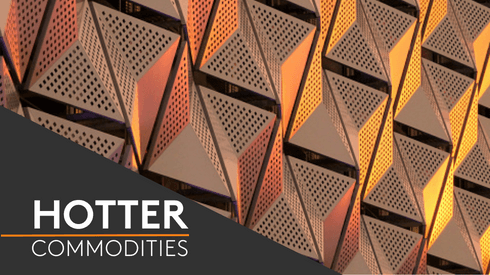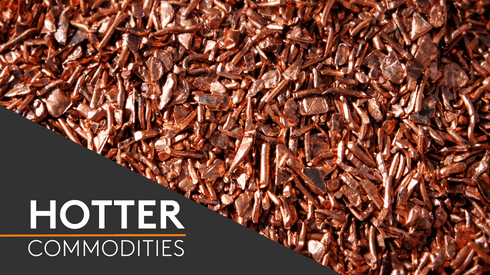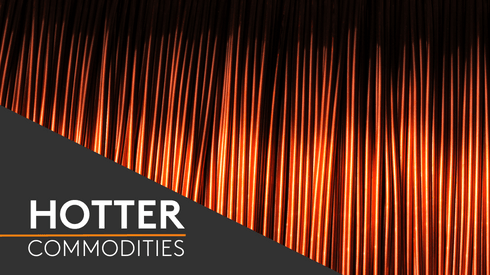Chinese carmakers produced 27.02 million units in 2022, up by 3.4% year on year, while sales rose by 2.1% to 26.86 million units, data from the China Association of Automobile Manufacturers (CAAM) shows.
The year-on-on year growth in output and sales last year came despite multiple headwinds faced by the Chinese automotive industry, including the resurgence of Covid-19, a shortage of semiconductor chips, high battery raw materials prices and an unstable geopolitical situation, CAAM said.
The purchase tax for vehicles priced below 300,000 yuan ($45,000) and with 2-liter or smaller engines was 5% of the sticker price between June 1 and December 31, 2022, down from 10% previously, according to China’s Ministry of Finance.
In December 2022, China’s automobile output totaled 2.38 million units, down by 0.3% month on month and down by 18.2% year on year. Sales reached 2.56 million units last month, up by 9.7% month on month but down by 8.4% year on year.
The rapid spread of Covid-19 in China following the relaxation of the country’s Zero Covid policy during December resulted in a decrease in consumer activity. As a result, automobile output and sales did not achieve the expected growth for the month, CAAM said.
China’s output and sales of electric vehicles (EVs), meanwhile, continued to register strong growth in 2022, both setting fresh record highs in the final month of the year.
EV output in China totaled 7.1 million units in 2022, an increase of 96.9% year on year, while sales of such vehicles rose by 93.4% to reach 6.89 million units.
For December 2022, EV output came to 795,000 units, up by 3.52% month on month and up by 51.80% year on year. EV sales totaled 814,000 units last month, up by 3.56% month on month and up by 51.80% year on year.
CRC prices extend gains in December
Fastmarkets’ weekly price assessment for steel cold-rolled coil domestic, ex-whs Eastern China was 4,500-4,550 yuan per tonne on January 13.
The latest assessment is up by 50-60 yuan from 4,450-4,490 yuan per tonne a month earlier, but down by 50-70 yuan per tonne from a recent high of 4,550-4,620 yuan per tonne on December 30.
An optimistic market outlook boosted by a raft of stimulus measures underpinned Chinese CRC prices over the past month, but seasonally slow demand also weighed on the market, participants told Fastmarkets.
Leading Chinese steelmaker Baoshan Iron & Steel has raised its CRC prices for a second straight month, increasing its domestic base prices by 100 yuan per tonne month on month for February bookings, after a 150 yuan-per-tonne increase for January.
CRC inventories held by traders in 21 major Chinese cities totaled 1.22 million tonnes on January 10, up by 90,000 tonnes (8%) from 10 days earlier, marking the first increase since the Golden Week holiday in early October, data from the China Iron & Steel Association showed.
Traders told Fastmarkets that spot CRC trading in China’s domestic market has ground to a halt in the run-up to the Chinese New Year holiday (January 21-27).
ADC12 price largely stable
The price for aluminum ingot alloy ADC12, an alloy used in car wheels, was largely stable in December due to limited spot activity.
Fastmarkets’ price assessment for aluminium alloy ADC12, exw dp China fell to 18,500-19,000 yuan per tonne on January 11, widened downward by 100 yuan per tonne from 18,600-19,000 yuan per tonne a week earlier. The price was assessed at 18,800-19,100 yuan per tonne at the end of November.
Limited availability of aluminium scrap continued to support ADC12 prices, while buyers were on the sidelines restocking because of high prices and slow orderbooks.
Many plants – both on the producer and consumer side – were shut during December due to growing Covid-19 infections and workers returning home early for the holidays, which led to very thin liquidity in the spot market.
“We’re holding our offer levels in the near term, and we don’t have inventory pressure,” an east China-based supplier source said. “Buyers have only emerged in the market when the ADC12 price falls in line with the SHFE (Shanghai Futures Exchange) aluminium price recently.”
“But since inventory levels at end users are low, there probably will be restocking demand after Chinese New Year, which will give support to the price,” the supplier source added.
The front-month aluminium contract on the SHFE averaged 18,965 yuan per tonne in December, up from an average of 18,738 yuan per tonne in November.
Battery materials prices largely trend downward on weak demand
Prices for lithium salts, a key material in battery production, remained on a downward trend during December, coming under pressure from weak demand and bearish sentiment in the market.
Fastmarkets’ price assessment for lithium carbonate 99.5% Li2CO3 min, battery grade, spot price range exw domestic China was 470,000-500,000 yuan per tonne on January 12, down by 20,000 yuan per tonne from 490,000-520,000 yuan per tonne a week earlier. The price stood at 570,000-585,000 yuan per tonne on December 1.
Fastmarkets’ price assessment for lithium hydroxide monohydrate LiOH.H2O 56.5% LiOH min, battery grade, spot price range exw domestic China was 470,000-500,000 yuan per tonne on January 12, also down by 20,000 yuan per tonne from 490,000-520,000 yuan per tonne a week earlier. The price stood at 570,000-580,000 yuan per tonne on December 1.
“Battery producers cut production during December amid a pessimistic outlook for China’s EV consumption in Q1 2023, because the EV subsidy was removed [from the start of 2023]. As a result, demand for lithium salts waned a lot in December,” a cathode producer source said.
Amid the thin demand and market expectation of further price decline, consumers were cautious and in wait-and-see mode last month, and were therefore in no hurry to purchase spot units.
As such, even though some eager traders kept lowering their offers before any further price reduction could happen, sellers still reported difficulty in securing deals.
Prices for cobalt sulfate, another key raw material for batteries, also maintained a downtrend in China last month due to consistent thin downstream buying and sufficient supply. This downtrend has persisted so far in 2023.
Fastmarkets’ price assessment for cobalt sulfate 20.5% Co basis, exw China was 44,000-46,000 yuan per tonne on January 13, unchanged from the price assessed on January 11. The latest assessment is down by 10,000 yuan per tonne from 54,000-56,000 yuan per tonne on December 2, 2022, and down by 47,000-48,000 yuan per tonne from 102,000-103,000 yuan per tonne at the beginning of 2022.
“Downstream buyers are very cautious and not in a hurry to purchase cobalt sulfate amid the slow demand growth of the EV sector at the year-end. Some eager sellers give much lower offers to boost cashflow, and we have no choice but to lower prices to attract deals as well under the sluggish market conditions,” a cobalt sulfate producer source said.
“It was a very hard year in 2022 for the cobalt sulfate market with prices continuing the downward trend, and now we have stopped offering with the approach of the Lunar New Year holiday. I am expecting a better market after the first quarter of 2023 as demand might pick up then,” a second cobalt sulfate producer said.
Elsewhere, nickel sulfate prices in China fell consecutively throughout December, giving back gains made earlier in the year.
Fastmarkets’ weekly price assessment for nickel sulfate min 21%, max 22.5%; cobalt 10ppm max, exw China averaged 38,800 yuan per tonne last month, down from an average of 41,125 yuan per tonne in November.
Downstream production cuts starting from battery makers have put pressure on the raw materials market, which weighed on nickel sulfate prices, sources told Fastmarkets.
These production cuts had filtered down to nickel sulfate refineries in mid-December, but failed to inspire any buying, sources added.
“It’s really hard to sell,” a nickel sulfate supplier source said, citing the production cuts in downstream sectors.
Furthermore, the seasonal lull ahead of the Chinese New Year holiday had also contributed to the general slowdown in activity, and this led some participants to only expect a rebound in the market from the second quarter of 2023.
“I believe this is also a seasonal thing so that we could see a stronger market [after the Lunar New Year],” a consumer source said, adding that the market is bottoming.
Meanwhile, even though Chinese EV sales continued to grow during December, prices for manganese sulfate, another key battery raw material, struggled to rise amid sufficient supply in the market, sources told Fastmarkets.
Fastmarkets’ price assessment for manganese sulfate 32% Mn min, battery grade, exw mainland China was 6,200-6,500 yuan per tonne on January 12, unchanged since August 25, 2022.
Downstream precursor producers usually purchase manganese sulfate through tenders once a quarter, and market participants would expect the market to stay stable in coming months.
The flake fines market, used in natural anode production, had consolidated throughout most of 2022 after jumping by 9.2% in the first quarter.
Fastmarkets’ weekly price assessment for graphite flake 94% C, -100 mesh (-194), fob China was $830 per tonne on January 12, unchanged since October 20, 2022.
The flake fines market was mostly firm in the first half of last year on concerns about supply issues and relatively sound demand from anode manufacturing sector.
But the market softened in the third and final quarter of 2022 in response to evolving market dynamics with falling synthetic prices and weakening downstream demand continuing to add pressure to the natural graphite market.
Get to grips with the volatile battery materials market
Visit our dedicated battery materials page to discover more insights on the factors at play in the industry in 2023 and beyond.






